The spirituality of India may be experienced at its most vivid if you go there. Head to Uttar Pradesh’s Varanasi. Hindus revere this historic city, which has been continuously inhabited for more than 2,800 years.
After death, worshipers think they might break free from the reincarnation cycle and merge with the divine in Varanasi, the holy city of Hinduism.
Throughout the bustling metropolis, there is a palpable ferocity in the air.
As you make your way down the Banaras Ghats, you’ll find yourself in the heart of Varanasi. Early in the morning, the faithful make their way down the steps to wash away their sins in holy water, and later in the evening, they return for prayer rites powered by fire.
Labyrinthine ancient city has a pulsating vitality that lasts all day. When it comes to navigating the streets of Varanasi, legend has it that no precise map exists.
Being the best taxi service in Chandigarh, Be prepared to become oriented and have some of the most memorable sightseeing experiences of your life.
10 Best Places to Visit in Varanasi in 2024
1. Ganges River
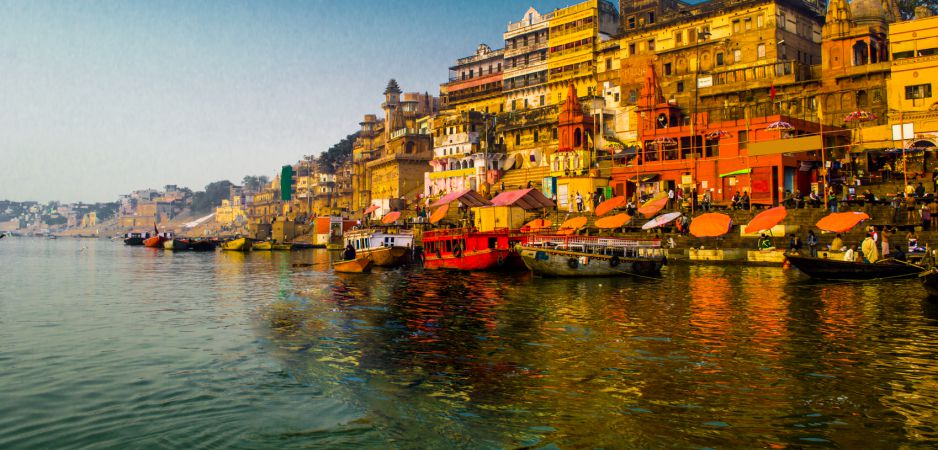
The Ganges River, which is named after the Hindu goddess Ganga, is one of India’s most sacred natural wonders. To reach the Bay of Bengal, the river flows southeast from the Himalayan Mountains in the north. Approximately 400 million to 600 million people depend on the Ganges River for everyday bathing and drinking water.
Thousands of Hindu pilgrims go to Varanasi each year to bathe in the sacred Ganges water and conduct ceremonies along the river’s ghats. If you’re on vacation, you’ll likely spend a significant amount of time wandering about the city and taking in the views along the Ganges.
Negotiate a boat ride down the river with one of the many boatmen camped up along the ghats if you can get up early enough.
One of the most popular things to do in Varanasi in the late afternoon or early evening is to buy a tiny floating offering and release it into the Ganges River. The euphoric experience will link you to Hinduism and remain with you for a long time.
2. Dasaswamedh Ghat
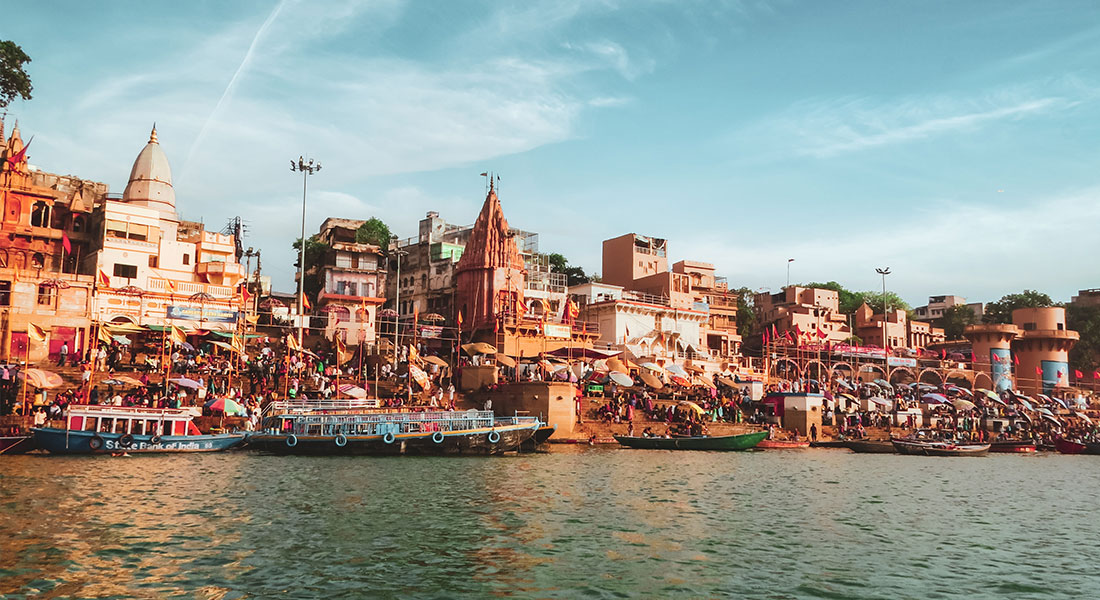
The Dasaswamedh Ghat in Varanasi is one of the top sites to visit in the city. An eclectic mix of flower vendors advertising colorful blooms, riverboat tour companies pitching trips down the Ganges, and sadhus (holy men) in face paint make up this popular tourist destination. During the day, this location is a great place to people-watch.
Every night at about 7 p.m., Hindu priests perform the Ganga Aarti at the Dasaswamedh Ghat. A conch shell and saffron-colored robes signaled the beginning of the spiritual rite, which was performed by priests. More than a thousand people gathered to see the priests chant and waft incense tiers in complicated patterns for 45 minutes. Undoubtedly one of the best things to see while you’re here.
You may avoid the throng and get the best seats for the concert if you arrive at least two hours early to the ghat. Boats on the river or store balconies over the ghat are other great places to get a glimpse of the city.
3. Assi Ghat
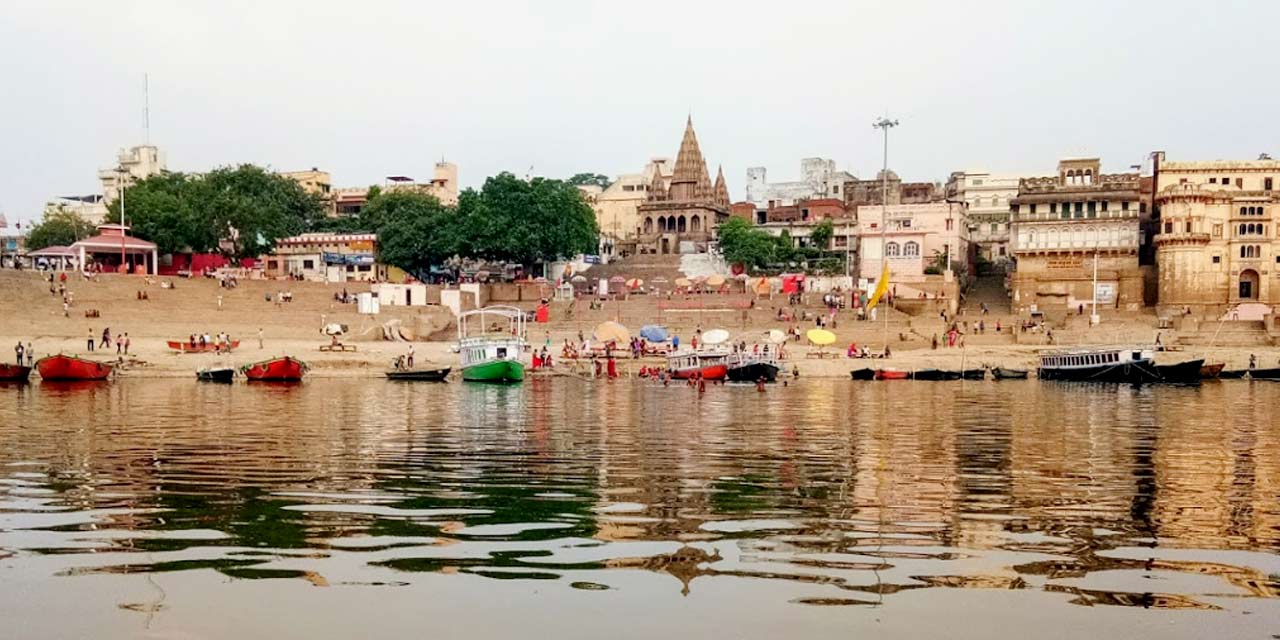
Varanasi’s southernmost major ghat is one of the most popular tourist attractions in the city. Located under a holy fig tree, Assi Ghat’s most notable feature is a Shiva lingam (phallic symbol of the Hindu god). Hundreds of pilgrims visit every day to bathe in the Ganges River and pray to Lord Shiva.
Is your back aching after a long trip? Take a morning yoga class at Assi Ghat, where you’ll be surrounded by dozens of people and live music every day. During the evenings, visitors may enjoy a smaller and more personal version of the Dasaswamedh Ghat Ganga Aarti.
4. Manikarnika Ghat
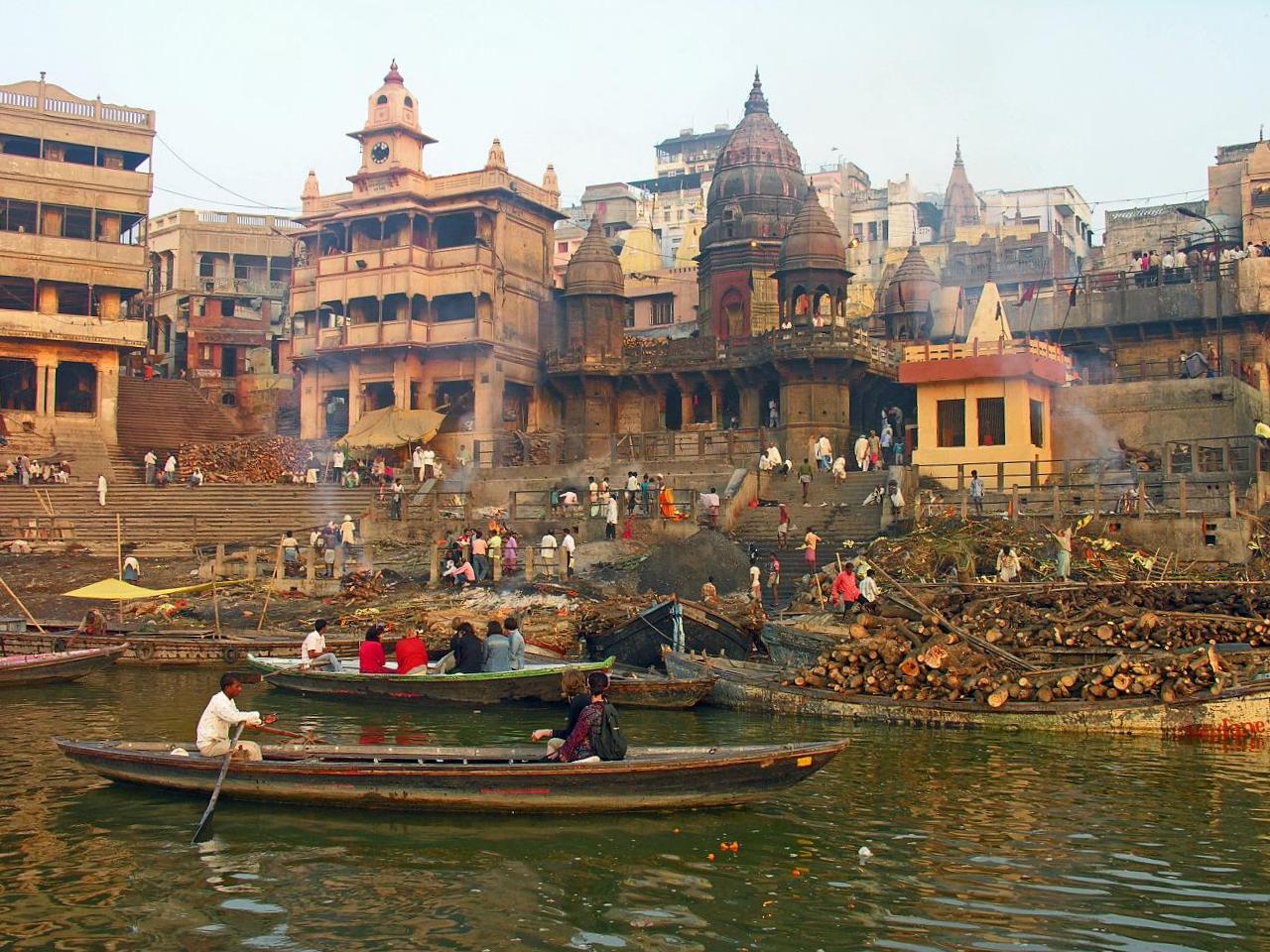
Manikarnika Ghat is erupting in a cloud of noxious fumes. This ghat’s constant cremations are the source of this material, and it’s not made in a factory. Manikarnika Ghat is revered by Hindus as a sacred site where the souls of the deceased might attain liberation (moksha) (emancipation from the cycle of spiritual rebirth). Every day, scores of bodies are cremated on the ghat’s funeral pyre, which is lit 24 hours a day.
Tourists are usually offered guided tours of the intriguing ghat by priests or guides; however, some of these individuals may be pushy in their requests for payment of their services. Members of a “untouchable caste” are seen bringing cloth-wrapped corpses on improvised stretchers and stacks of firewood ready to fuel the bonfire, as well.
For a price, you may also be able to watch a cremation from the comfort of your own home. This is not a typical tourist attraction, and it’s not for the faint of heart either. Be aware of your boundaries; be courteous; and avoid photographing mourners, the deceased, or funeral arrangements.
Passing through Manikarnika Ghat on a boat excursion down the Ganges River is a great way to witness the traditional cremations without getting too near. Tourists may still get a feel of what’s going on at this significant location despite the fact that distance dampens the impression.
5. Dhamek Stupa
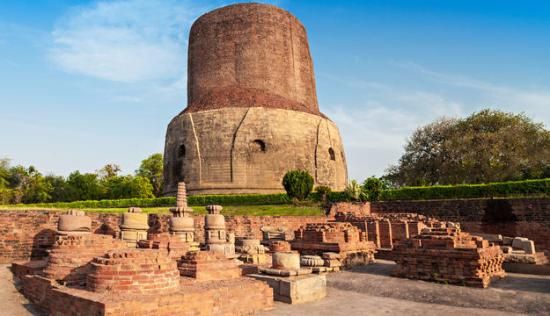
Although Varanasi is mostly a Hindu city, the nearby town of Sarnath, home to the Buddhist monastery of Sarnath, is just about 12 kilometers away. The Dhamek Stupa, a large stone and brick building that stands 43.6 meters tall and 28 meters in circumference, can be seen here. For more than 1,500 years, a stupa stood in its location, replacing an older building that had been in existence since 249 BCE.
Devotees say that after attaining enlightenment, the Buddha traveled to Dhamek Stupa to deliver his first speech, in which he unveiled the Eightfold Path. Explore the stupa’s walls and see the beautiful carvings of birds, people, and flowers that adorn them.
Sarnath is a great day excursion from Varanasi because of its many other tourist attractions. A Buddhist temple from at least the 6th century, the Chaukhandi Stupa, is a must-see, followed by a stop to the Sarnath Museum to witness the Lion Capital of Ashoka, a sculpture that formerly adorned the Ashoka Pillar in 250 BCE and was adopted as India’s National Emblem in 1950. The tranquil Tibetan Temple is a wonderful place to end the day before returning to Varanasi.
6. Shri Kashi Vishwanath Temple
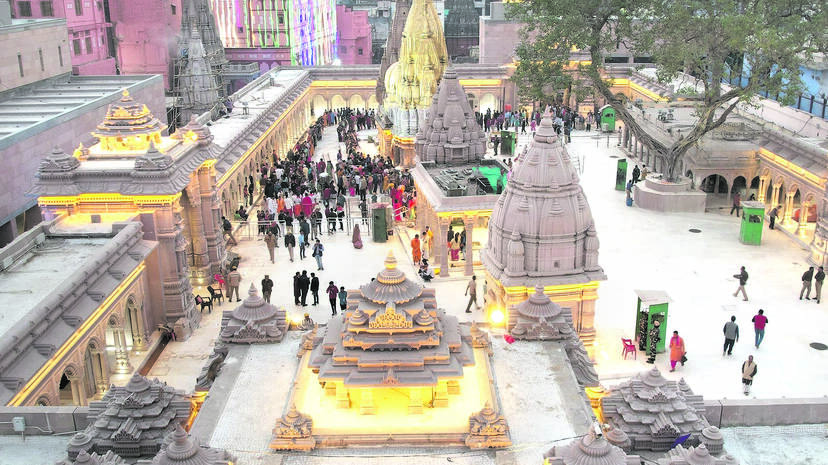
Shri Kashi Vishwanath Temple, a holy site about four kilometers from Varanasi Junction Railway Station, attracts Hindu pilgrims and visitors from all over the world. The temple, which is devoted to the Hindu god Shiva, has been dubbed “The Golden Temple” because of its gold-plated tower. Hundreds of temples around India have been influenced by this temple’s unique architectural style.
Tourists are required to leave their cameras, phones, bags, and other valuables in a nearby locker because of the complex’s strict security procedures. There will be a long queue of people anxious to get their hands on the 60-centimeter-tall Shiva lingam in a silver altar. It’s an exhilarating, but also gratifying, journey.
On Hindu festivals, worshippers might wait up to two days in line to get inside the temple, therefore it’s best to avoid this attraction.
7. Banaras Hindu University
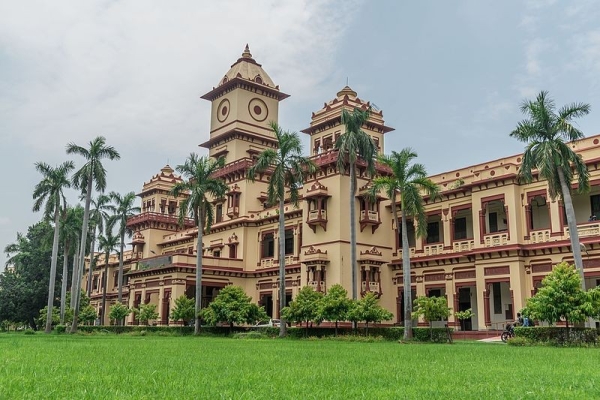
This university has been a major component of Varanasi, India, since its establishment in 1916. More than 25,000 students live on campus at this prestigious public institution, making it one of the biggest in Asia.
Come to this 1,300-acre campus if you want to get away from the throngs of people and bustling city life in Varanasi. As a respite from the bustle of the Banaras Ghats, this tranquil spot is sheltered by hundreds of towering trees.
Visit the New Vishwanath Temple on campus, which was ultimately completed in 1966 after decades of development. In addition to being one of the tallest temples in India, the Shri Kashi Vishwanath Temple has a major architectural influence.
Bharat Kala Bhavan, the university’s on-campus museum, is a must-see for visitors. More than 100,000 important archeological and artistic objects are housed at the cultural institution, including a stunning collection of miniature paintings.
8. Ruchika Art Gallery

What if you could bring a bit of Varanasi with you? Take a look at the Ruchika Art Gallery, located off of Ravindrapuri Road. As the gallery’s name implies, Ruchika Mehrotra has created an inviting space in which to exhibit her colorful collection of paintings depicting Varanasi and the ghats in all of its vibrancy and intensity.
Many of the paintings are small enough to fit in a bag as keepsakes, but there are a few bigger pieces that would need transportation. You may also buy some of the wonderful postcards that were created for this attraction.
Art classes are offered at Ruchika Art Gallery in addition to presenting the work of local artisans. Get in contact with Ruchika to find out what’s going on while you’re in Varanasi.
9. Shri Durga Temple
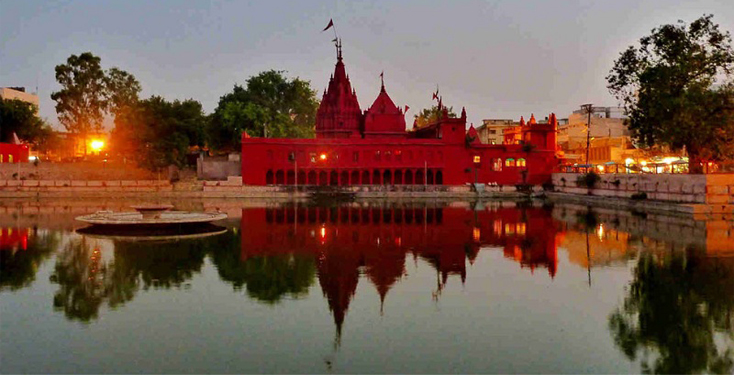
The ghats of Varanasi aren’t the only place where spiritual practices take place. The Shri Durga Temple, located just west of Assi Ghat and dedicated to the goddess Durga, is a popular stop for Hindu pilgrims. The 300-year-old temple is painted brilliant red from top to bottom, making it impossible to overlook.
Known as the “Monkey Temple” because of its abundance of monkeys, this temple is a great place to see them in action. Outside the temple, you may also see a pair of elegant swans resting in the pool of water.
10. Ramnagar Fort
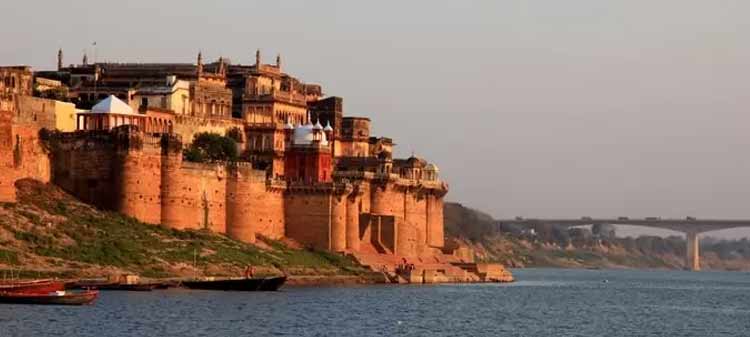
Varanasi is one of the few cities in India without a fort. Ramnagar Fort is located around 14 kilometers from the city center. No longer in service as an outpost, this sandstone fort and palace complex dates back to the 18th century. Today, it serves as a bizarre museum filled with vintage cars and exotic hookahs, as well as ancient weaponry and jewel-encrusted sedan chairs.
Check out the fort’s temples, including one that celebrates the author of the Mahabharata and other key Hindu epics, Veda Vyasa.


Hello there! I simply want to offer you a huge thumbs up for the great information you have here on this post. I will be coming back to your web site for more soon.
Content for your website https://zetds.seychellesyoga.com/info
Web Development Wizards https://zetds.seychellesyoga.com/info
Can provide a link mass to your website https://zetds.seychellesyoga.com/info
Free analysis of your website https://zetds.seychellesyoga.com/info
Content for your website https://zetds.seychellesyoga.com/info
Web Development Wizards https://zetds.seychellesyoga.com/info
Can provide a link mass to your website https://zetds.seychellesyoga.com/info
Free analysis of your website https://zetds.seychellesyoga.com/info
SEO Optimizers Team https://zetds.seychellesyoga.com/info
I offer mutually beneficial cooperation https://zetds.seychellesyoga.com/info
Cool website. There is a suggestion https://zetds.seychellesyoga.com/info
I really liked your site. Do you mind https://zetds.seychellesyoga.com/info
Content for your website https://ztd.bardou.online/adm
Web Development Wizards https://ztd.bardou.online/adm
Your site’s position in the search results https://ztd.bardou.online/adm
Your site’s position in the search results https://ztd.bardou.online/adm
Free analysis of your website https://ztd.bardou.online/adm
SEO Optimizers Team https://ztd.bardou.online/adm
I offer mutually beneficial cooperation https://ztd.bardou.online/adm
Cool website. There is a suggestion https://ztd.bardou.online/adm
I really liked your site. Do you mind https://ztd.bardou.online/adm
Content for your website https://ztd.bardou.online/adm
Web Development Wizards https://ztd.bardou.online/adm
Can provide a link mass to your website https://ztd.bardou.online/adm
Your site’s position in the search results https://ztd.bardou.online/adm
Free analysis of your website https://ztd.bardou.online/adm
SEO Optimizers Team https://ztd.bardou.online/adm
I offer mutually beneficial cooperation https://ztd.bardou.online/adm
Cool website. There is a suggestion https://ztd.bardou.online/adm
Web Development Wizards http://myngirls.online/
Can provide a link mass to your website http://myngirls.online/
Your site’s position in the search results http://myngirls.online/
Free analysis of your website http://myngirls.online/
SEO Optimizers Team http://myngirls.online/
I offer mutually beneficial cooperation http://myngirls.online/
Content for your website http://fertus.shop/info/
Web Development Wizards http://fertus.shop/info/
Can provide a link mass to your website http://fertus.shop/info/
Your site’s position in the search results http://fertus.shop/info/
Free analysis of your website http://fertus.shop/info/
SEO Optimizers Team http://fertus.shop/info/
I offer mutually beneficial cooperation http://fertus.shop/info/
Cool website. There is a suggestion http://fertus.shop/info/
I really liked your site. Do you mind http://fertus.shop/info/
Here’s what I can offer for the near future http://fertus.shop/info/
You will definitely like it http://fertus.shop/info/
The best prices from the best providers http://fertus.shop/info/
Additional earnings on your website http://fertus.shop/info/
Analytics of your website http://fertus.shop/info/